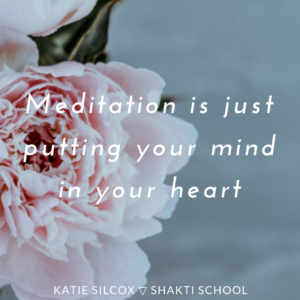Here in Virginia, we're in the middle of a heat wave. So in today's mini-episode, Katie shares her favorite date shake recipe to help you stay cool and feel amazing!
In this episode, you'll hear:
~ Katie's current obsession with dates!
~ The importance of milk in Ayurveda
~ The benefits of cardamom
~ Summer Date Shake Recipe (see below)
~ All you need is a blender, milk, dates, and SPICES!
Summer Date Shake Recipe
~ 2 cups milk of your choice
~ 1 or 2 dates with pits removed
~ Cardamom to taste
~ Optimal: crushed rose petals for topping
Put everything in a blender and mix for about 30 seconds. Pour into your favorite glass and sprinkle with crushed rose petals. You can drink the date shake straight away, put it in the fridge to enjoy with your tea or coffee later or heat it up and sip before bed.
Enjoy!
Or Subscribe on iTunes
Learn more:
Help us Spread our Podcast Wings
Did you try this summer date shake recipe? This show is a passion project that I produce for the love of sharing. If you enjoy this show and want a free and easy way to help it grow, the most effective way you can help is to:
- Subscribe to the show by clicking “subscribe” in iTunes
- Write us a review in iTunes
- Share this show with one friend right now!
It’s simple, but you’d be AMAZED to know how much it helps my little love project reach more people. iTunes’ algorithm uses ratings and reviews to know who to show our show to in their app.
Here’s the link to leave us reviews in iTunes.
From my heart to your screen,
Katie


 Our culture supports individual effort and perfection. In fact, I recently read about an experiment done on two groups of people, one from the United States, and another group from Japan. Each group was shown an image that included an individual scuba diver sinking into an ocean full of fish and other marine life. The group was given a few minutes to look over the image, and was later asked to recall what was presented there.
Our culture supports individual effort and perfection. In fact, I recently read about an experiment done on two groups of people, one from the United States, and another group from Japan. Each group was shown an image that included an individual scuba diver sinking into an ocean full of fish and other marine life. The group was given a few minutes to look over the image, and was later asked to recall what was presented there.
